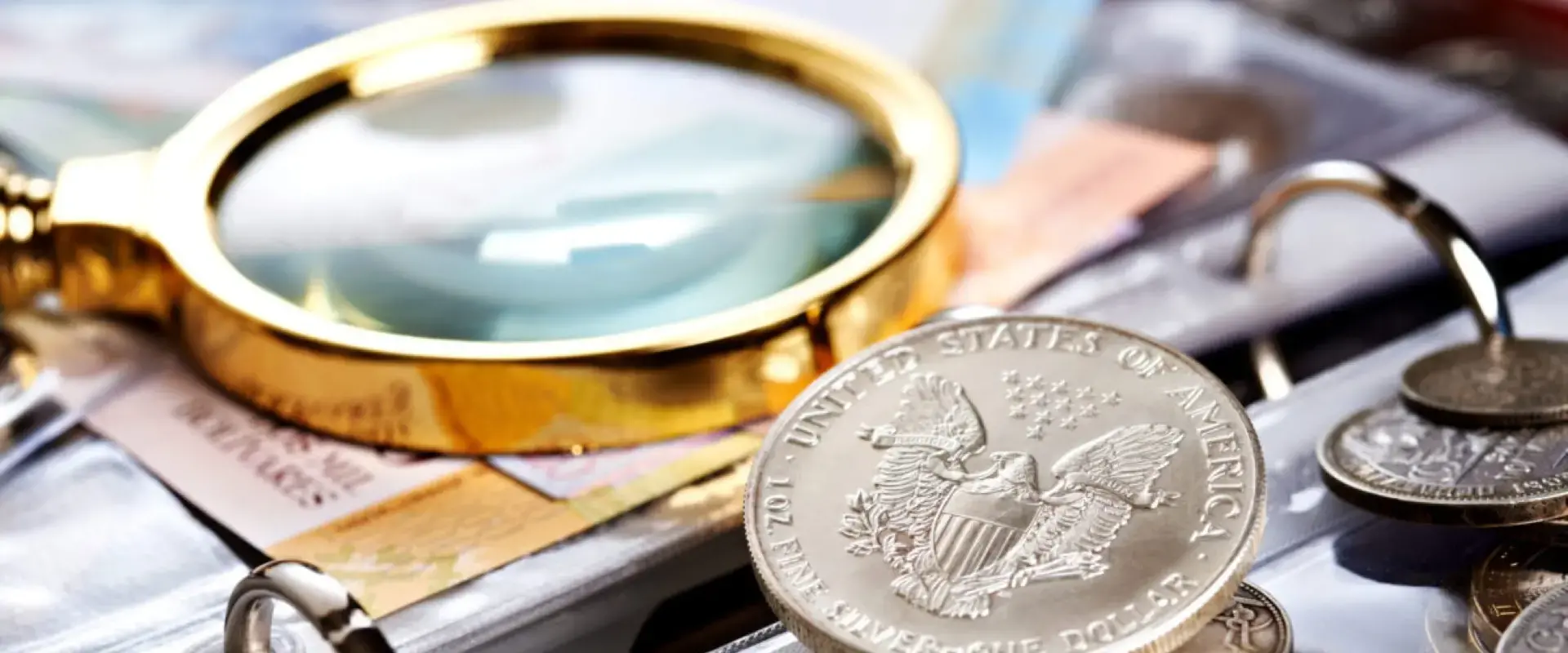Collecting coins is not only fun and rewarding, but for many, a great long-term investment. Gold and silver have long been a way to store value, and coins have historically been one of the most common ways to do that.
Today we collect coins, but may not always be sure of their authenticity. We all want to purchase authentic coins and avoid counterfeits. Discovering that you’ve bought fake coins is definitely not fun.
We’ll walk you through the three primary ways that counterfeiters produce fraudulent coins so you can understand the basics of how we spot these coins.
Counterfeit coins are produced with three main methods: striking, casting, and altering.
Struck Counterfeits
Struck coins are those that have an image pressed into a blank metal disc, also called a planchet. The images are engraved or otherwise cut into dies. The U.S. Mint uses steel for its dies, but counterfeiters might use less expensive materials.
Once the counterfeiter has created the front and back dies, they load them into a press and strike the metal discs to create the counterfeit coins. This requires a lot of labor and is therefore expensive and time-consuming. Striking is usually reserved for imitating the most valuable coins.
Cast Counterfeits
Cast coins use a mold made from genuine coins that the counterfeiter wants to imitate, and molten metal is poured into the mold. Casting allows for more complex or intricate designs, although results in a softer or rounder image.
Counterfeiters often use this method as it’s inexpensive and fairly simple. However, this approach often produces a low-quality counterfeit that’s easily detected, sometimes by the visible casting seam.
Altered Coins
Altered coins are the cheapest and easiest way to create a fake coin. The counterfeiter takes a common, less valuable coin and alters it so that it has the appearance or markings of a more valuable coin. This is most often done by removing details from a coin so that it matches that of a more expensive coin.
Splitting is another common method. Counterfeiters take two common coins, split them in half so that the front and back of the coin are separated, then solder or glue the two halves together so that it looks like a more valuable version of the coin.
Avoiding Counterfeit Coins
Now that you understand how many counterfeit coins are made, you can keep an eye out for the telltale signs. The best way to avoid counterfeit coins is to buy from a reputable coin dealer, like CV Coins & Collectables.
If you want to have your coins appraised, please contact us to schedule an in-person appointment today. We look forward to helping you with your collection!

